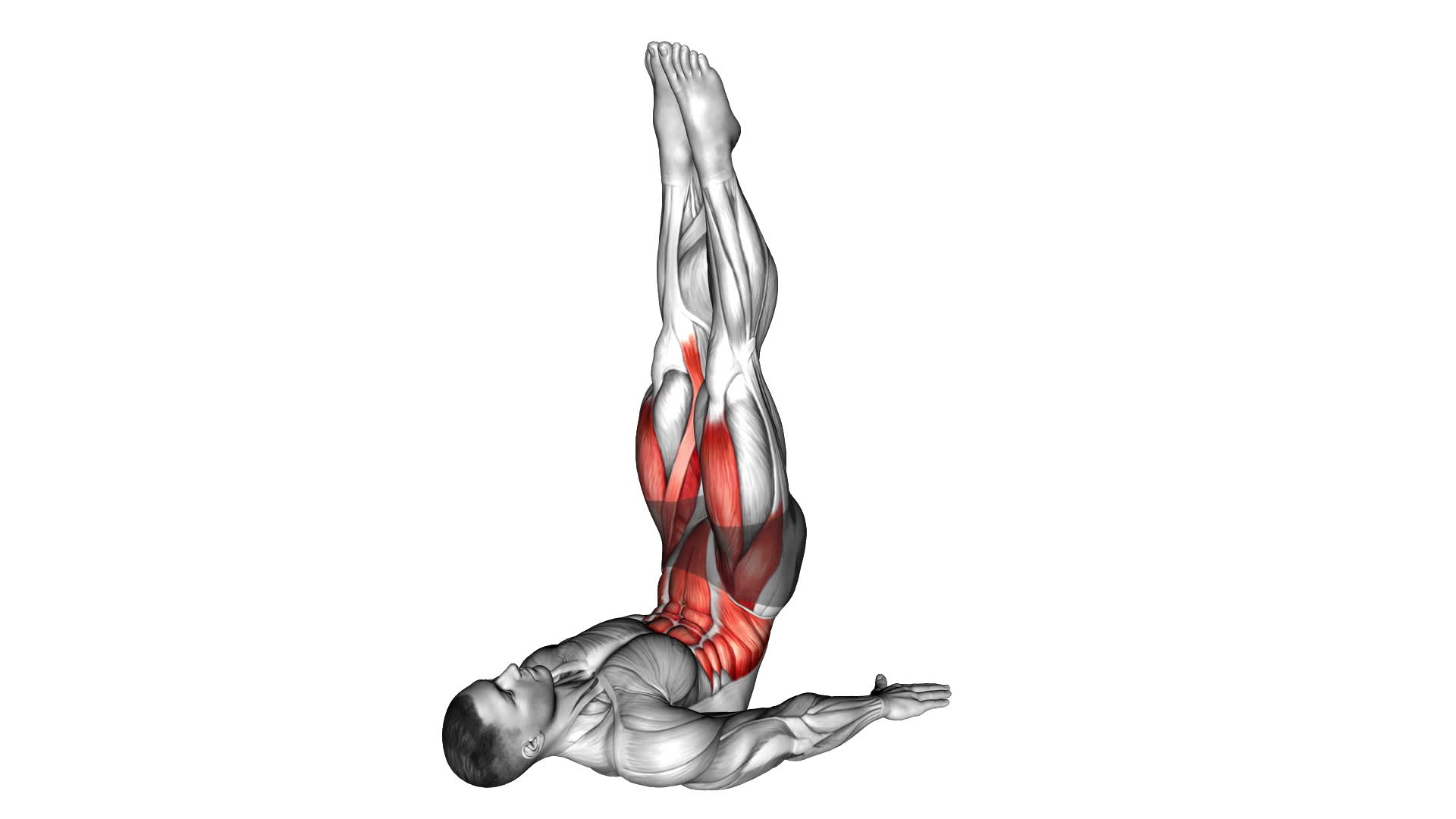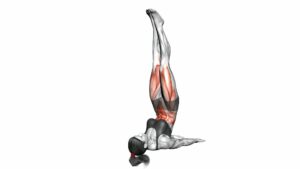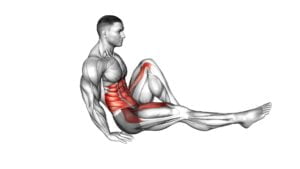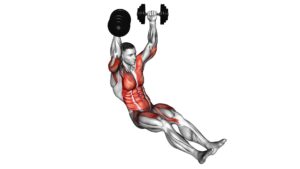Alternate Lying Floor Leg Raise (male) – Video Exercise Guide & Tips

Are you looking for an effective way to strengthen and tone your legs? Look no further than the Alternate Lying Floor Leg Raise.
Watch This Exercise Video
This video exercise guide is designed specifically for males and provides step-by-step instructions on proper form and technique.
Whether you're a beginner or an experienced fitness enthusiast, this exercise can be modified to suit your fitness level. Avoid common mistakes and maximize your results with these helpful tips.
Get ready to take your leg workout to the next level!
Key Takeaways
- The alternate lying floor leg raise targets and strengthens abdominal muscles.
- It is highly effective for core strengthening and engages abdominal muscles to stabilize the body.
- The exercise improves hip flexibility and stretches hip muscles.
- Proper form and technique, such as keeping the lower back pressed against the floor and avoiding common mistakes, are crucial for maximizing results.
Benefits of the Alternate Lying Floor Leg Raise
One major benefit of the Alternate Lying Floor Leg Raise is that it targets and strengthens the abdominal muscles. This exercise is highly effective for core strengthening. By lying on the floor and raising your legs, you engage your abdominal muscles to stabilize your body and lift your legs off the ground. This movement requires a strong core, and with regular practice, you can develop a solid foundation of abdominal strength.
In addition to core strengthening, the Alternate Lying Floor Leg Raise also helps improve hip flexibility. As you raise your legs, you're actively stretching the muscles in your hips, specifically the hip flexors. This can be beneficial for individuals who've tight hip flexors, as it helps to increase range of motion and reduce stiffness.
Proper Form and Technique for the Exercise
To perform the Alternate Lying Floor Leg Raise correctly, position yourself on the floor using a mat or towel for comfort. Lie flat on your back with your legs fully extended and your arms resting by your sides. Keep your lower back pressed against the floor throughout the exercise to engage your core muscles.
As you begin the exercise, lift one leg off the floor while keeping it straight. Raise it as high as you comfortably can without straining your lower back. Slowly lower the leg back down to the starting position and repeat the movement with the opposite leg. Alternate between legs for the desired number of repetitions.
To ensure proper form and technique, avoid these common errors. Don't lift your lower back off the floor or allow it to arch excessively. This can lead to strain or injury. Additionally, avoid swinging your legs or using momentum to lift them. Focus on using your abdominal muscles to control the movement.
For advanced variations, you can add ankle weights or resistance bands to increase the difficulty of the exercise. This will challenge your muscles further and help to improve strength and endurance. However, it's important to maintain proper form throughout the exercise, even when adding resistance.
Variations and Modifications for Different Fitness Levels
To progress or regress the Alternate Lying Floor Leg Raise for different fitness levels, you can modify the exercise by adjusting the range of motion or adding resistance. Here are some variations and modifications that can be made to accommodate different fitness levels:
- Adaptations for injuries: If you have any injuries or limitations, you can modify the exercise by reducing the range of motion. Instead of lifting your legs all the way up, you can perform a smaller range of motion that feels comfortable for you. This will help prevent further strain or discomfort.
- Progression strategies for advanced athletes: For those who are more advanced and looking for a challenge, you can add resistance to the exercise. This can be done by using ankle weights or holding a dumbbell between your feet. The added weight will increase the difficulty and engage your muscles even more.
- Adjustments for beginners: If you're just starting out or have limited strength, you can modify the exercise by bending your knees slightly. This will make it easier to lift your legs off the ground and gradually build up your strength over time.
Common Mistakes to Avoid While Performing the Exercise
Are you making any common mistakes while performing the Alternate Lying Floor Leg Raise exercise? Proper technique is crucial to maximize the benefits and prevent injury. Here are some common mistakes to avoid:
- Using momentum: Many people tend to swing their legs up using momentum instead of engaging their core muscles. This not only reduces the effectiveness of the exercise but also puts unnecessary strain on the lower back. Focus on using your abdominal muscles to lift your legs slowly and controlled.
- Lifting too high: Raising your legs too high can strain your lower back and put excessive pressure on your hip flexors. Lift your legs only as high as you can comfortably without compromising form.
- Arching your back: It's important to maintain a neutral spine throughout the exercise. Avoid arching your back or lifting your hips off the floor. Engage your core muscles and press your lower back into the floor to maintain proper alignment.
- Holding your breath: Remember to breathe throughout the exercise. Holding your breath can increase tension in your body and hinder your performance. Inhale as you lower your legs and exhale as you lift them.
Tips to Maximize Your Results and Progress With the Exercise
To maximize your results and progress with the Alternate Lying Floor Leg Raise exercise, incorporate these tips into your routine:
- Focus on proper breathing techniques during the exercise: Breathing plays a crucial role in any workout. Remember to exhale as you lift your legs off the floor and inhale as you lower them back down. This controlled breathing will help engage your core muscles more effectively and improve your overall performance.
- Incorporate resistance bands for added intensity: Resistance bands are a versatile tool that can enhance the effectiveness of the exercise. Attach a resistance band to your ankles and perform the leg raises. The added resistance will challenge your muscles further, leading to increased strength and muscle tone.
- Gradually increase the difficulty: As you become more comfortable with the exercise, challenge yourself by gradually increasing the difficulty. You can do this by extending the duration of the exercise, increasing the number of repetitions, or incorporating variations such as scissor kicks or flutter kicks.
Frequently Asked Questions
How Many Calories Does the Alternate Lying Floor Leg Raise Burn?
The alternate lying floor leg raise is a great exercise for targeting your lower abs and burning calories. By performing this exercise correctly, you can effectively engage your core muscles and increase your overall calorie burn.
Incorporating the alternate lying floor leg raise into your workout routine can help strengthen your core, improve stability, and enhance your overall fitness level.
Can the Alternate Lying Floor Leg Raise Help With Lower Back Pain?
Yes, the alternate lying floor leg raise can help with lower back pain.
By engaging your core and strengthening your hip muscles, this exercise can provide stability and support to your lower back.
Additionally, it can be modified for beginners by starting with smaller leg raises and gradually increasing the range of motion.
If you need added support, you can also perform this exercise with a partner who can assist and provide guidance.
Is It Necessary to Use a Mat or Can the Exercise Be Done on a Carpeted Floor?
Using a mat for floor exercises has several benefits. It provides cushioning and support, reducing the strain on your joints.
The alternate lying floor leg raise can be done on a carpeted floor, but using a mat is recommended for added comfort and stability. If you don't have a mat, you can modify the exercise by placing a towel or blanket under your lower back for support.
This will help prevent discomfort and ensure proper form.
Can the Alternate Lying Floor Leg Raise Be Done With Ankle Weights for Added Resistance?
Yes, you can definitely add ankle weights to the alternate lying floor leg raise for added resistance. This will increase the intensity of the exercise and provide additional benefits for your leg muscles.
Ankle weights can help to strengthen and tone your thighs, hamstrings, and glutes. They also offer variations to the traditional leg raise, allowing you to challenge yourself and target different muscle groups.
Are There Any Alternative Exercises That Target the Same Muscle Group as the Alternate Lying Floor Leg Raise?
There are several alternative exercises that target the same muscle group as the alternate lying floor leg raise. You can try exercises like the hanging leg raise, knee tucks on a stability ball, or reverse crunches.
These exercises engage your abdominal muscles and help strengthen your core. Incorporating these alternative exercises into your workout routine can provide variety and help you achieve your fitness goals.
Conclusion
In conclusion, the alternate lying floor leg raise is a beneficial exercise that targets the lower abdominal muscles and hip flexors. By maintaining proper form and technique, you can maximize the effectiveness of this exercise.
Additionally, variations and modifications can be made to suit different fitness levels. By avoiding common mistakes and following the provided tips, you can achieve optimal results and progress with this exercise.
Incorporate the alternate lying floor leg raise into your workout routine for stronger and more defined abs.

Author
Years ago, the spark of my life’s passion ignited in my mind the moment I stepped into the local gym for the first time. The inaugural bead of perspiration, the initial endeavor, the very first surge of endorphins, and a sense of pride that washed over me post-workout marked the beginning of my deep-seated interest in strength sports, fitness, and sports nutrition. This very curiosity blossomed rapidly into a profound fascination, propelling me to earn a Master’s degree in Physical Education from the Academy of Physical Education in Krakow, followed by a Sports Manager diploma from the Jagiellonian University. My journey of growth led me to gain more specialized qualifications, such as being a certified personal trainer with a focus on sports dietetics, a lifeguard, and an instructor for wellness and corrective gymnastics. Theoretical knowledge paired seamlessly with practical experience, reinforcing my belief that the transformation of individuals under my guidance was also a reflection of my personal growth. This belief holds true even today. Each day, I strive to push the boundaries and explore new realms. These realms gently elevate me to greater heights. The unique combination of passion for my field and the continuous quest for growth fuels my drive to break new ground.







